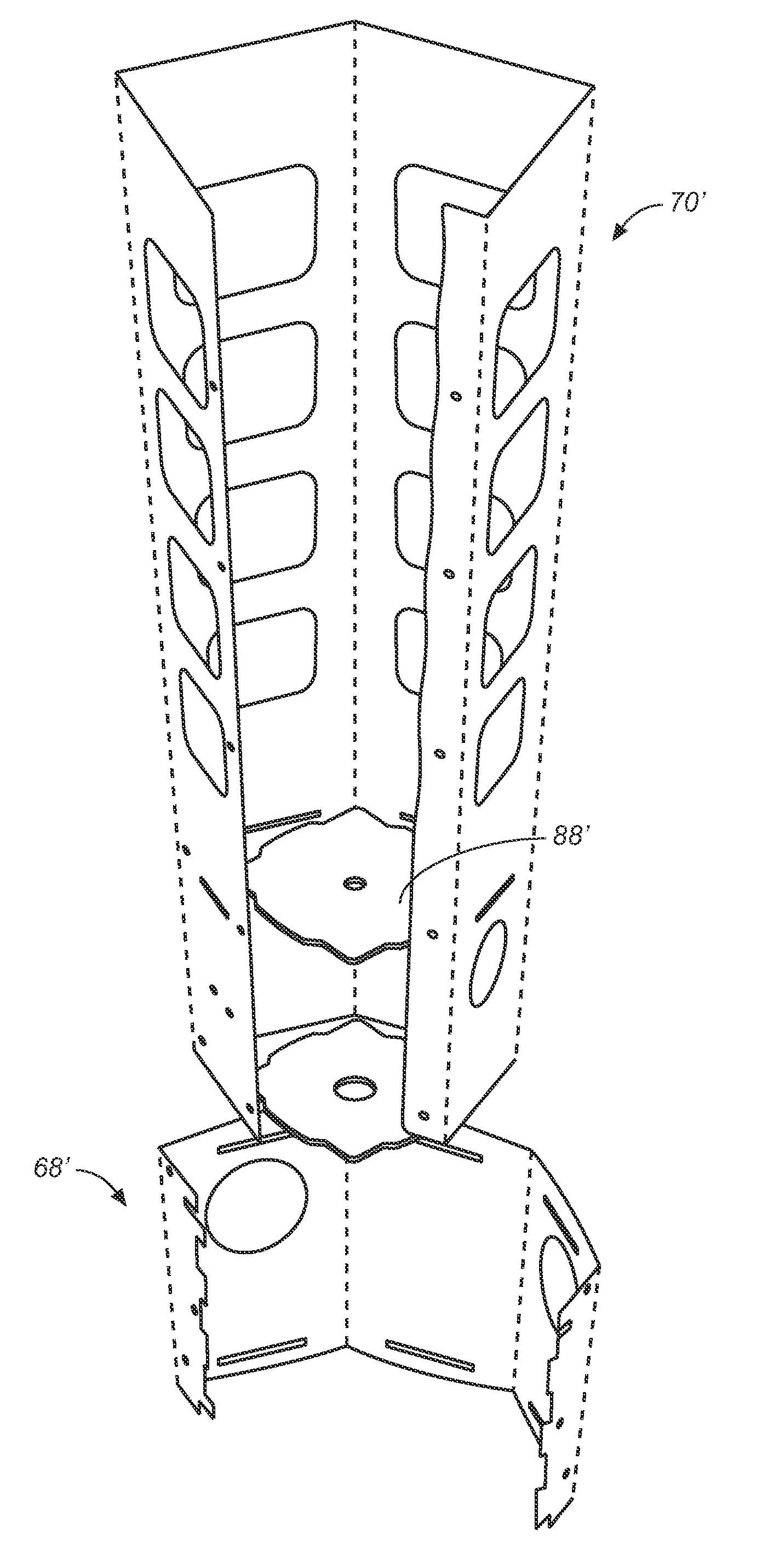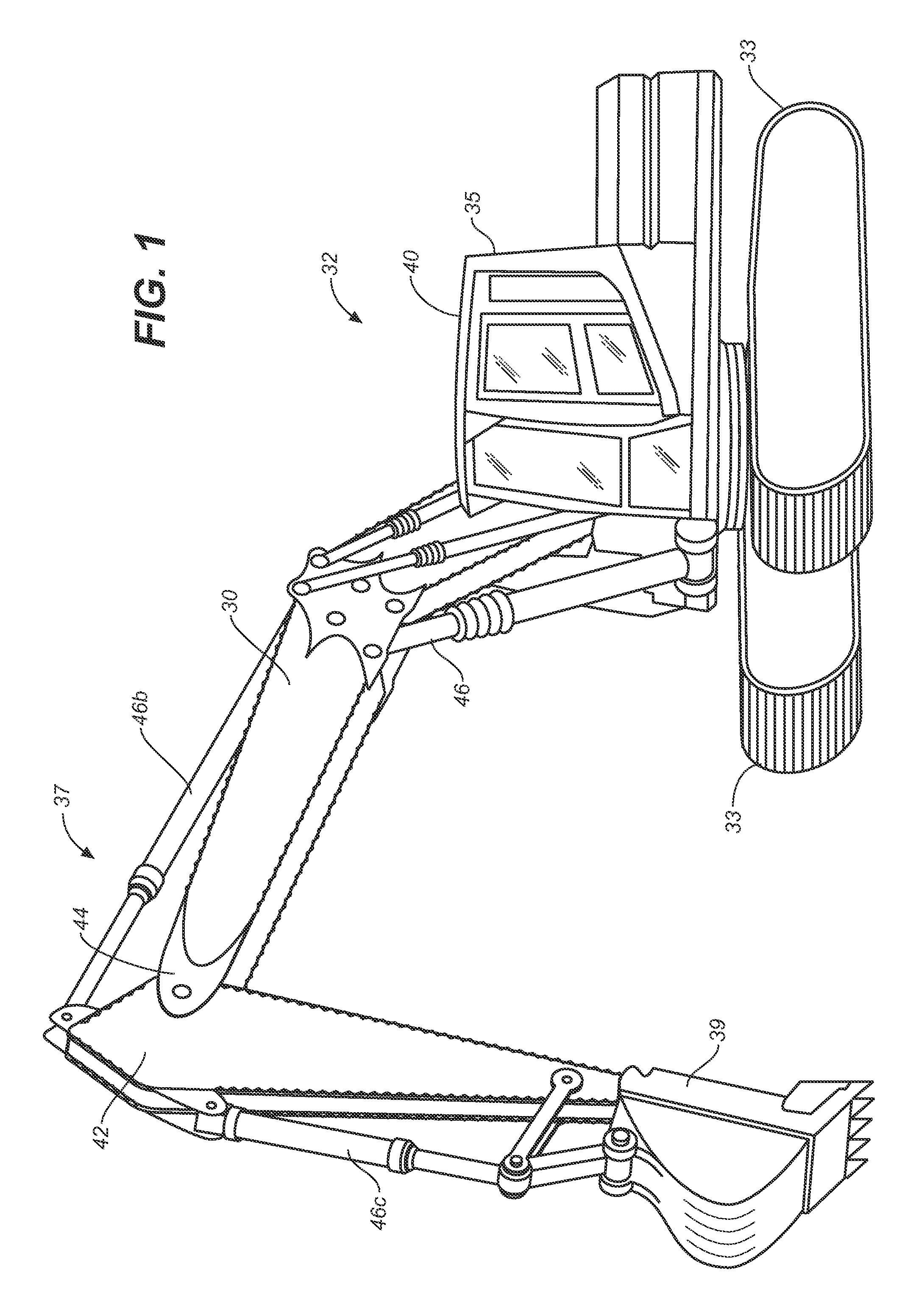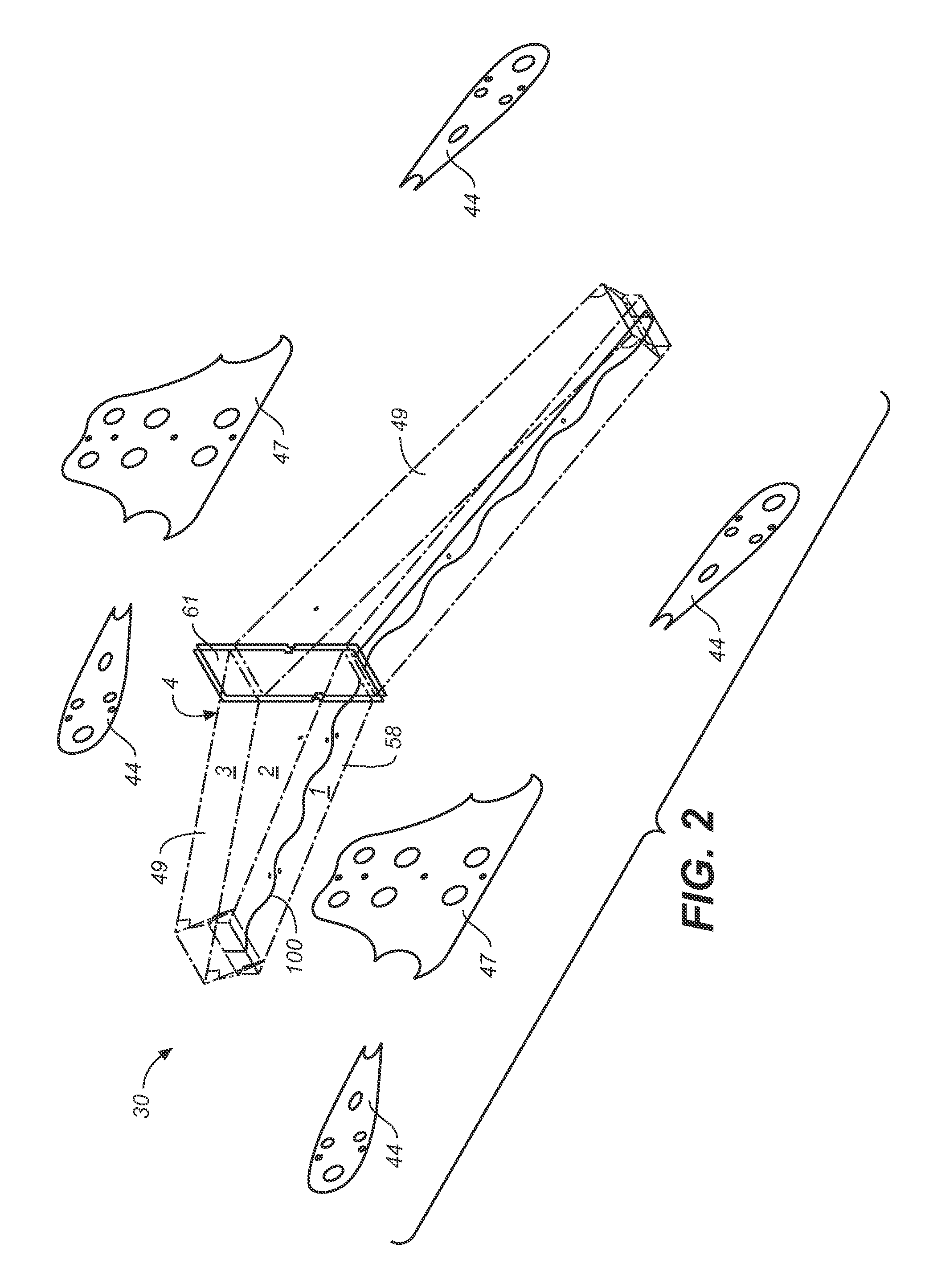Load-bearing three-dimensional structure
a three-dimensional structure and load-bearing technology, applied in the direction of paper/cardboard containers, mechanical machines/dredgers, other domestic articles, etc., can solve the problems of requiring a skilled welder and time, cumbersome solid beams, and heavy weight,
- Summary
- Abstract
- Description
- Claims
- Application Information
AI Technical Summary
Benefits of technology
Problems solved by technology
Method used
Image
Examples
Embodiment Construction
[0058]Reference will now be made in detail to the preferred embodiments of the invention, examples of which are illustrated in the accompanying drawings. While the invention will be described in conjunction with the preferred embodiments, it will be understood that they are not intended to limit the invention to those embodiments. On the contrary, the invention is intended to cover alternatives, modifications and equivalents, which may be included within the spirit and scope of the invention as defined by the appended claims.
[0059]Turning now to the drawings, wherein like components are designated by like reference numerals throughout the various figures, attention is directed to FIG. 1 which illustrates a three-dimensional linkage arm formed from a substantially two-dimensional single sheet of material in accordance with the present invention, which structure is generally designated by the numeral 30. While the illustrated embodiment is a high load-bearing linkage arm for a digging...
PUM
| Property | Measurement | Unit |
|---|---|---|
| three dimensional structure | aaaaa | aaaaa |
| shape | aaaaa | aaaaa |
| structure | aaaaa | aaaaa |
Abstract
Description
Claims
Application Information
 Login to View More
Login to View More - R&D
- Intellectual Property
- Life Sciences
- Materials
- Tech Scout
- Unparalleled Data Quality
- Higher Quality Content
- 60% Fewer Hallucinations
Browse by: Latest US Patents, China's latest patents, Technical Efficacy Thesaurus, Application Domain, Technology Topic, Popular Technical Reports.
© 2025 PatSnap. All rights reserved.Legal|Privacy policy|Modern Slavery Act Transparency Statement|Sitemap|About US| Contact US: help@patsnap.com



